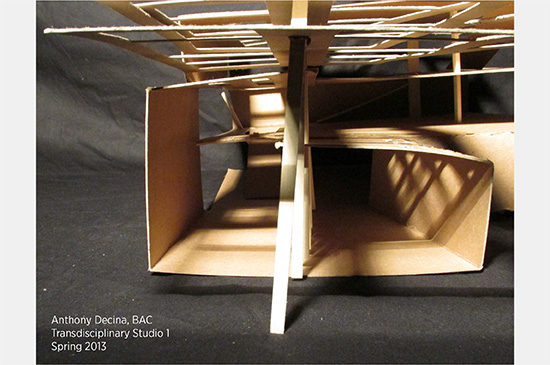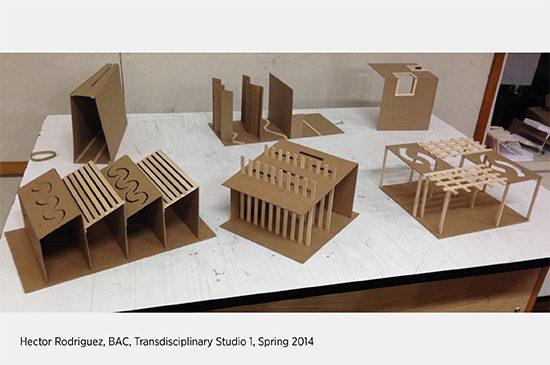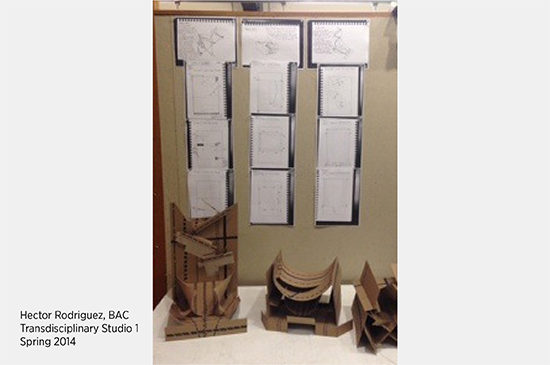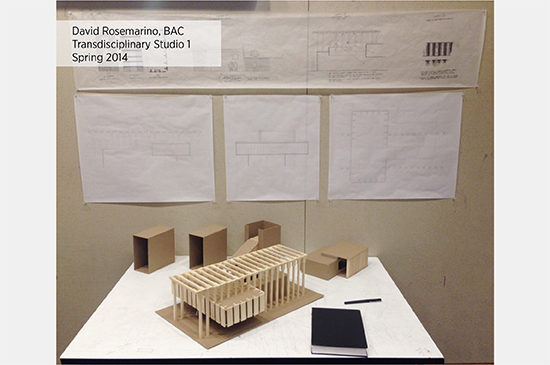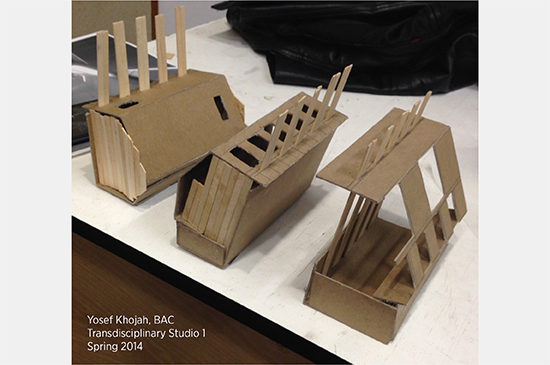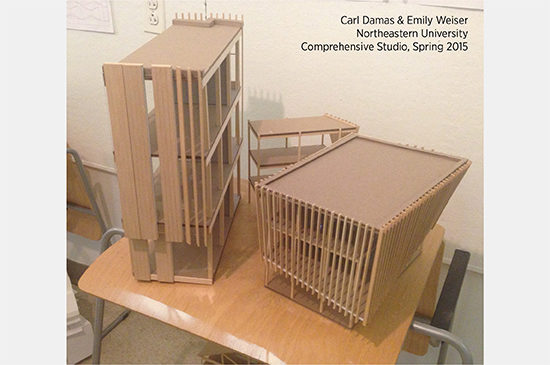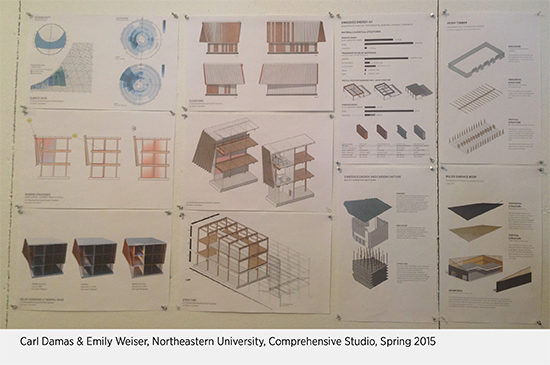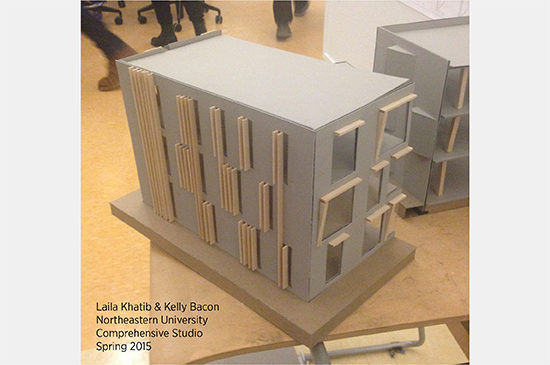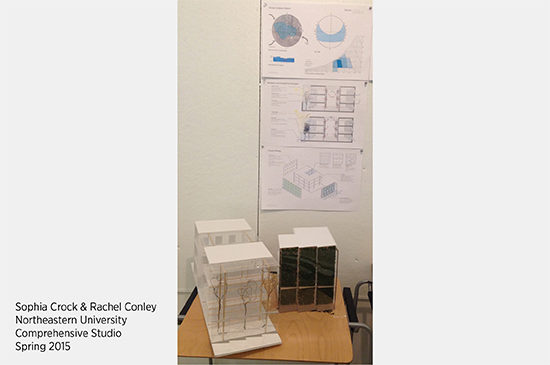I took what I consider a challenging leap in my career as a studio educator this year when I accepted a position as instructor for the Comprehensive Studio at Northeastern University. After having taught first semester Foundation Studio at the Boston Architecture College for three years, teaching a final semester undergraduates is pretty much as big of a jump between two studios as I could find. Or so I worried when I accepted the position at Northeastern.
Several weeks into the semester, I am happy to say that there are many more similarities between teaching Foundation and Comprehensive Studios than might be anticipated by looking at their curriculum. This is not to say that my final semester students are performing at the same level as first semester students who are still learning about what it means to be in architecture school. It is quite refreshing after six semesters of guiding students through the requirements of line weights to now be discussing the nuances of a legible exploded axonometric diagram (and this within the first three weeks!). There are, however, several striking similarities between the discussions I have had so far with my final semester students that are covering many of the same issues I discuss with my first semester students. I strongly believe this is because the questions I am asking and concepts we discuss are ones that architects need to think about as they practice design, regardless of experience level.
How does this design decision relate to your concept?
This is a question I have asked my students for the past three years, have asked them in the last few weeks and I routinely ask myself in my everyday practice of architecture. Having a design concept, a main idea about what you are trying to achieve through the architecture of your design, makes design decisions on every scale easier to make and ultimately results in a more meaningful and coherent design. I had an “ah-ha” moment as an architecture student in a studio similar to the Comprehensive Studio I now teach: I realized the wall section detail I was working through not only related to the design concept that drove everything from building massing, circulation and landscape design throughout my process, but that generating a detail relating back to my concept actually made my entire design better! While working at PAYETTE, I’ve also been reminded of the importance of a coherent design concept and understanding how every task we engage in our practice should reinforce that big idea that drives our architecture. If the design of a stair relates to how our building sits on the site and encourages student circulation through a campus and a building to encourage collaboration, it is certainly better than a stair that simply allows for safe egress in the event of an emergency. It is these types of revelations and joy in design that I hope to convey to my students of all levels.
How does this design decision impact the other design decisions you’ve already made?
One of the most exciting elements of teaching Comprehensive Studio so far has to been to explicitly discuss with my students how the systems they are exploring in their designs impact each other and the architecture that they are making. In the Foundation Studios I have taught, we laid out a design process for our students that added a new parameter with each assignment so that they could approach each new requirement in a sequence. With each assignment they had to look back and forward at the same time to see how their previous design decisions were impacted by the new factors of scale, site and program. In many ways, the Comprehensive Studio is structured in a similar way over the course of the entire semester; there are simply many more parameters that my students are required to address at once. Because the Comprehensive Studio focuses on the integration of systems for structure, building performance, envelope and thermal comfort, we start with an exploration of the systems that go into a building design. It is not until the fifth week in the semester that we introduce a site. We leave client and program requirements to be considered after week fourteen. In my discussions with my students this semester I am continually reminded of discussions we have regularly in our practice about an integrated approach to design. How is the architecture of an envelope or the floor-to-floor heights of a building impacted by the passive, sustainable approaches we develop for thermal comfort and access to daylight? In practice, we engage engineers and other consultants early in the design process to ensure that decisions we make about mechanical, structural and building systems help to shape, and are integrated with, our architectural systems. With an integrated design approach how a building looks and is formed cannot be separate from how it performs.
How does a person experience this space?
My Comprehensive Studio students are struggling at this early stage of the studio, to find something familiar related to other studios they have taken. We are focused on the technical building and performance systems and hold back on discussing site and program, compared to other studios where these factors are introduced early. In all of the technicalities of percent glazing, and structural bay spacing, my students are able to find common ground in thinking about how people are impacted by the spaces that they are creating. While visualizing how someone might use or feel in a space was a new concept for my first semester students, my final semester students are challenged to think about how the amount of glazing on their façade impacts the solar heat gain into the space, and ultimately the human comfort on the other side of that façade. How people experience and use our architecture on all levels is central to the learning and practice of architecture.
So, while I was perhaps daunted at first by the pressure of teaching a new, more technically challenging studio this semester, in each class I am excited to explore ideas that I discussed with my first semester students in more complex, rich and nuanced ways with my final semester students. And every day I am reminded how the main concepts are essential to the practice of architecture throughout one’s career.


